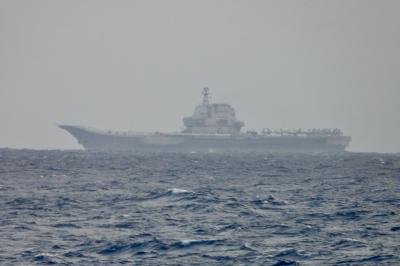Once you've experienced high-speed Internet access, there's no turning back. While many first surf the Internet at high speeds at their jobs, broadband connections of various types -- cable, DSL, satellite, and ISDN -- offer home users similar speeds. But shopping for broadband isn't easy. Not only do you have cost to worry about, but there's a variety of technical questions you'll need to be able to answer before that fast connection enters your home.
The first thing you need to know is which types of broadband connections are available where you live. Not everyone has a choice among cable, DSL, satellite and ISDN. In fact, many people around the world are lucky to have one type of high-speed connection available.
Typically, your local cable television provider will offer cable access, while you usually purchase DSL or ISDN connections from the phone company. Satellite providers are another breed entirely -- usually the same firms who provide satellite television reception.
If you have only one high-speed provider, it's pretty easy to learn about the cost of broadband. If you're one of the lucky ones who can choose among types of connections, though, you'll have some questions to ask.
Most broadband Internet access plans are offered on a monthly basis. You should contact each provider, however, to find out whether a yearly plan is offered at a reduced cost.
Also inquire about setup costs. Usually, broadband providers will supply an external modem that you hook up to your computer to get online. Sometimes, a technician must come out to your home to hook everything up properly. Both the modem and the setup time are likely to add to your expense of acquiring a broadband connection.
If you're out there shopping for the cheapest possible high-speed connection, then your need for speed takes second place to price.
Virtually all high-speed Internet providers offer several pricing plans that correspond to different maximum download and upload speeds. The higher the speed, the higher the cost.
Generally, the basic plans for all providers offer enough speed for most home users to surf the Internet without experiencing annoying delays.
But if speed is more important to you than cost, basic cable plans usually provide faster speeds than basic DSL. Satellite connections are about on a par with DSL, although they are often priced higher, when available. ISDN's basic speed is usually the slowest of the group.
Sooner or later, most broadband users end up needing to contact a provider's technical support line. Things happen with computers -- and with Internet connections. Sometimes the only way to solve a problem is to speak to a live human being.
How easy is it to do that with your potential provider? To find out, of course, you can ask a sales representative, and you may or may not get a straight answer. A better way to check on a provider's reputation is to ask people you know about their experiences, or to use Google's Groups feature (http://groups.google.com) to search for user comments regarding the potential provider.
If possible, contact the technical support department by phone or e-mail and see how long it takes someone to respond.
Virtually all broadband connections require that you have an ethernet networking card installed in your computer. The broadband modem connects to the cards.
You'll receive a new e-mail address with just about any broadband service plan. Occasionally, your plan will include enough e-mail addresses for the entire family.
You'll want to find out how diligent your provider is about combating unwanted e-mail, otherwise known as spam. The more spam filtering that is done by your provider's e-mail servers, the less you'll have to worry about at home.

AIR SUPPORT: The Ministry of National Defense thanked the US for the delivery, adding that it was an indicator of the White House’s commitment to the Taiwan Relations Act Deputy Minister of National Defense Po Horng-huei (柏鴻輝) and Representative to the US Alexander Yui on Friday attended a delivery ceremony for the first of Taiwan’s long-awaited 66 F-16C/D Block 70 jets at a Lockheed Martin Corp factory in Greenville, South Carolina. “We are so proud to be the global home of the F-16 and to support Taiwan’s air defense capabilities,” US Representative William Timmons wrote on X, alongside a photograph of Taiwanese and US officials at the event. The F-16C/D Block 70 jets Taiwan ordered have the same capabilities as aircraft that had been upgraded to F-16Vs. The batch of Lockheed Martin

GRIDLOCK: The National Fire Agency’s Special Search and Rescue team is on standby to travel to the countries to help out with the rescue effort A powerful earthquake rocked Myanmar and neighboring Thailand yesterday, killing at least three people in Bangkok and burying dozens when a high-rise building under construction collapsed. Footage shared on social media from Myanmar’s second-largest city showed widespread destruction, raising fears that many were trapped under the rubble or killed. The magnitude 7.7 earthquake, with an epicenter near Mandalay in Myanmar, struck at midday and was followed by a strong magnitude 6.4 aftershock. The extent of death, injury and destruction — especially in Myanmar, which is embroiled in a civil war and where information is tightly controlled at the best of times —

China's military today said it began joint army, navy and rocket force exercises around Taiwan to "serve as a stern warning and powerful deterrent against Taiwanese independence," calling President William Lai (賴清德) a "parasite." The exercises come after Lai called Beijing a "foreign hostile force" last month. More than 10 Chinese military ships approached close to Taiwan's 24 nautical mile (44.4km) contiguous zone this morning and Taiwan sent its own warships to respond, two senior Taiwanese officials said. Taiwan has not yet detected any live fire by the Chinese military so far, one of the officials said. The drills took place after US Secretary

THUGGISH BEHAVIOR: Encouraging people to report independence supporters is another intimidation tactic that threatens cross-strait peace, the state department said China setting up an online system for reporting “Taiwanese independence” advocates is an “irresponsible and reprehensible” act, a US government spokesperson said on Friday. “China’s call for private individuals to report on alleged ‘persecution or suppression’ by supposed ‘Taiwan independence henchmen and accomplices’ is irresponsible and reprehensible,” an unnamed US Department of State spokesperson told the Central News Agency in an e-mail. The move is part of Beijing’s “intimidation campaign” against Taiwan and its supporters, and is “threatening free speech around the world, destabilizing the Indo-Pacific region, and deliberately eroding the cross-strait status quo,” the spokesperson said. The Chinese Communist Party’s “threats